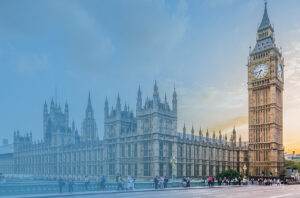Except for certain businesses, such as non-essential shops and public venues, which have been instructed to close, other employers can continue to work provided they can do so safely.
Of course anyone who is ill with, showing symptoms of or living with someone who is ill with symptoms of coronavirus / COVID-19 should be staying at home in line with the official stay at home guidance, see: https://www.gov.uk/government/publications/covid-19-stay-at-home-guidance/stay-at-home-guidance-for-households-with-possible-coronavirus-covid-19-infection
Where practical people should be working from home, however for many activities this is not possible so what should employers do in these circumstances?
The general rule is where possible to follow the guidelines for social distancing, maintaining a distance of at least 2 meters (approx. 6ft 6ins) between individuals (staff, customers, etc) and regularly washing hands for 20 seconds with soap and water (or hand sanitiser if soap and water are not available).
Where it is not practical to keep 2m apart, then it is recommended that staff work side by side or facing away from each other. Where face to face contact is necessary this should be kept to less than 15 minutes where possible and teams of workers should be kept as small as possible.
What is practical will depend on the workplace and the activities carried out. It is not possible to cover all scenarios in an article like this but some things you may want to consider include:
• Providing additional hand washing stations
• Displaying posters or making regular announcements to remind people of social distancing and hygiene advice
• Using floor markings to reinforce social distancing, especially in crowded areas
• Using additional barriers and screens
• Frequently cleaning and disinfecting surfaces and objects that are touched regularly
• Splitting staff into shifts and staggering work processes to minimise the number of people who need to be in one are at a time
• Staggering breaks especially if space in canteens and restrooms is limited
• Using electronic rather than paper forms and means of communication
More detailed advice, including practical examples for specific sectors is available from the following sources:
Public health England: https://www.gov.uk/government/publications/guidance-to-employers-and-businesses-about-covid-19/guidance-for-employers-and-businesses-on-coronavirus-covid-19
Scottish Government: https://www.gov.scot/publications/coronavirus-covid-19-phase-1-business-and-physical-distancing-guidance/
Welsh Government: https://gov.wales/taking-all-reasonable-measures-maintain-physical-distancing-workplace
Northern Ireland: https://www.nibusinessinfo.co.uk/content/coronavirus-workplace-safety-guidance-and-priority-sector-list-published
We have created a Coronavirus microsite with plenty of excellent articles; https://www.pib-insurance.com/coronavirus-update/
Please speak to your normal PIB Risk Management contact or get in touch using Email: [email protected] if you have any questions or would like assistance with developing training materials, policies and checklists for use in your workplace.

Employment Rights Bill – Government Publishes Implementation Roadmap

The Sun’s Out – Time To Get The Shorts Out?

Updated Gas Safety Guidance

Revised Bloodborne Viruses Guidance

New High Consequence Infectious Disease Guidance for Care Providers
